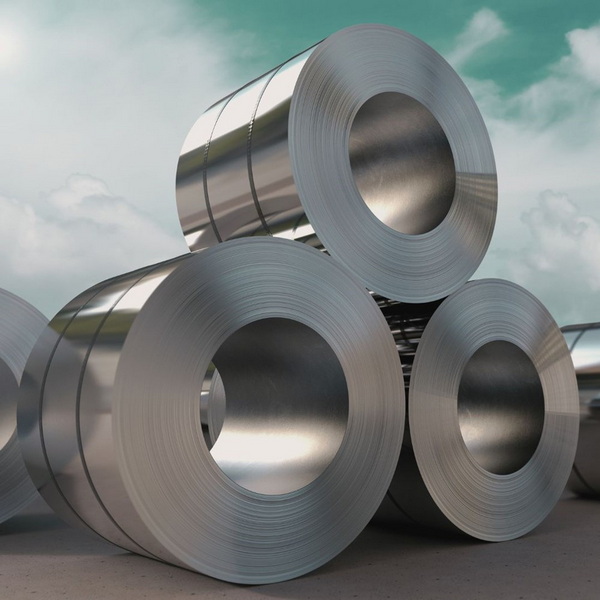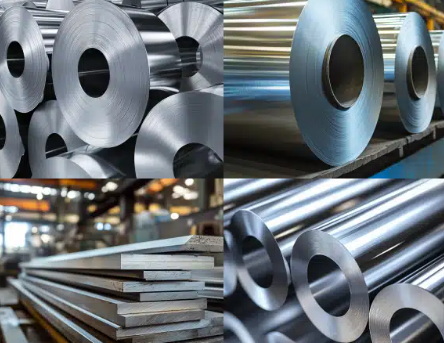English


Views: 222 Author: Tomorrow Publish Time: 2025-07-12 Origin: Site











Content Menu
● 2. Strength and Mechanical Properties
● 7. Chemical Composition and Alloying Elements
● 8. Fabrication and Weldability
● 9. Aesthetic and Surface Finish
● 10. Environmental and Sustainability Aspects
● FAQ
>> 1. What makes stainless steel resistant to corrosion?
>> 2. Are all stainless steels magnetic?
>> 3. Can stainless steel withstand high temperatures?
>> 4. Why does stainless steel have low thermal conductivity?
>> 5. How does the density of stainless steel affect its use?
Stainless steel is a versatile and widely used material known for its unique combination of properties that make it indispensable in many industries. Understanding the key properties of stainless steel is essential for selecting the right grade and type for specific applications. This article explores the fundamental physical, chemical, and mechanical properties of stainless steel that you should know.

One of the most important and defining properties of stainless steel is its corrosion resistance. Stainless steel contains a minimum of 11% chromium, which forms a thin, stable oxide layer on the surface known as the passive layer. This layer protects the metal from rust and corrosion by preventing oxygen and moisture from penetrating the surface. Although stainless steel can rust under extreme conditions, the corrosion is generally limited to the outermost layers, preserving the integrity of the deeper metal.
Additional alloying elements such as nickel and molybdenum further enhance corrosion resistance. Nickel improves resistance to acidic environments and adds toughness, while molybdenum increases resistance to pitting and crevice corrosion, especially in chloride-rich environments like seawater. Nitrogen is sometimes added to improve resistance to pitting corrosion and increase mechanical strength.
The corrosion resistance varies among stainless steel types and grades, making it crucial to choose the appropriate grade for the environment in which the steel will be used. For example, marine environments demand grades with higher molybdenum content, while food processing equipment typically requires stainless steel that resists acidic and alkaline cleaning agents.
Stainless steel is prized for its high strength and durability. The tensile strength of common stainless steel grades, such as 304, is around 210 MPa in the annealed condition, but it can be significantly increased through cold working or heat treatment processes.
Some specialized stainless steels, such as precipitation hardening alloys (e.g., 17-4 PH), can achieve tensile strengths exceeding 1,700 MPa. The strength of stainless steel remains stable across a wide temperature range, including very high and very low temperatures, making it suitable for demanding applications in aerospace, automotive, and construction industries.
Besides tensile strength, stainless steel exhibits excellent impact resistance, fatigue strength, and elasticity, contributing to its ability to withstand mechanical stresses and cyclic loading. This combination of mechanical properties allows stainless steel components to maintain structural integrity under heavy loads and dynamic conditions.
Stainless steel has a melting point ranging from approximately 1,325°C to 1,530°C, depending on the specific alloy composition. This melting point is comparable to that of ordinary steel and significantly higher than metals like aluminum or copper.
In terms of thermal conductivity, stainless steel is a relatively poor conductor of heat compared to metals such as copper and aluminum. This lower thermal conductivity is advantageous in applications requiring controlled heat transfer or insulation, such as cookware and kitchen appliances, where even heating is essential.
Stainless steel also maintains good thermal expansion characteristics, which must be considered in design to accommodate dimensional changes under temperature variations. The coefficient of thermal expansion is generally higher than carbon steel but lower than aluminum, which affects how stainless steel components fit and perform when exposed to temperature fluctuations.
The magnetic behavior of stainless steel depends on its crystal structure and alloy composition. Austenitic stainless steels (300 series), which contain high levels of nickel and chromium, are generally non-magnetic due to their face-centered cubic crystal structure.
In contrast, ferritic and martensitic stainless steels (400 series) are magnetic because of their body-centered cubic or tetragonal crystal structures. This property is significant in applications where magnetic response is either desired or needs to be avoided, such as in electrical appliances, magnetic separation processes, or medical devices.
It is worth noting that cold working austenitic stainless steel can induce some magnetic properties due to changes in crystal structure, which may be important in precise engineering applications.
Stainless steel has a density of approximately 7.8 grams per cubic centimeter, making it relatively heavy compared to other metals like aluminum. This density contributes to its strength and durability but also affects the weight of structures and products made from stainless steel.
The density is an important consideration in industries such as aerospace and automotive, where weight reduction is critical for performance and fuel efficiency. Engineers often balance the benefits of stainless steel's strength and corrosion resistance against the need to minimize weight by selecting alternative materials or thinner sections where feasible.

Stainless steel exhibits low electrical conductivity, which means it is a poor conductor of electricity compared to metals like copper or aluminum. This property is beneficial in applications requiring electrical resistance or minimal electrical interference, such as heating elements, resistors, and electronic components.
Low electrical conductivity also enhances safety in certain environments by reducing the risk of electrical hazards. However, this property makes stainless steel less suitable for electrical wiring or components where high conductivity is essential.
Stainless steel is an alloy primarily composed of iron, chromium, and varying amounts of nickel, molybdenum, nitrogen, and other elements. The exact composition determines its properties and suitability for different applications.
- Chromium (at least 11%) is essential for corrosion resistance.
- Nickel improves toughness, ductility, and corrosion resistance.
- Molybdenum enhances resistance to pitting and crevice corrosion.
- Nitrogen increases strength and corrosion resistance.
- Other elements like copper, titanium, and manganese may be added to tailor properties further.
The balance of these elements defines the stainless steel's microstructure and performance characteristics. For example, titanium and niobium are added to stabilize stainless steel against sensitization during welding, preventing intergranular corrosion.
Stainless steel is known for its excellent fabrication characteristics, including formability, machinability, and weldability. Different stainless steel grades respond differently to fabrication processes:
- Austenitic stainless steels are highly ductile and easy to form.
- Ferritic and martensitic grades are less ductile but can be hardened by heat treatment.
- Welding stainless steel requires attention to prevent sensitization and maintain corrosion resistance.
Proper welding techniques and filler materials are essential to avoid issues such as cracking, distortion, or loss of corrosion resistance. Post-weld heat treatments or passivation processes may be necessary to restore protective oxide layers.
Beyond functional properties, stainless steel is also valued for its aesthetic appeal. It can be finished in various ways, including brushed, polished, matte, or mirror finishes, making it popular in architecture, interior design, and consumer products.
The surface finish not only influences appearance but also affects corrosion resistance and cleanability. Smooth, polished surfaces tend to resist corrosion better and are easier to clean, which is why they are preferred in food processing and medical environments.
Stainless steel is highly recyclable, often containing a significant percentage of recycled material. Its durability and longevity reduce the need for frequent replacement, making it an environmentally friendly choice.
The ability to recycle stainless steel without loss of quality contributes to sustainable manufacturing practices. Additionally, stainless steel's resistance to corrosion reduces environmental contamination risks, especially in chemical and marine applications.
Stainless steel's key properties—corrosion resistance, strength, thermal stability, magnetic behavior, density, electrical conductivity, chemical composition, fabrication versatility, aesthetic appeal, and environmental sustainability—make it an outstanding material for a wide range of applications. Its ability to maintain performance under harsh conditions, combined with excellent fabrication qualities, ensures stainless steel remains a top choice in industries from construction and automotive to medical and food processing.

Stainless steel's corrosion resistance comes from its high chromium content, which forms a protective oxide layer on the surface, preventing rust and degradation.
No, austenitic stainless steels (300 series) are generally non-magnetic, while ferritic and martensitic stainless steels (400 series) are magnetic due to their crystal structures.
Yes, stainless steel has a high melting point (1,325°C to 1,530°C) and maintains strength at elevated temperatures, making it suitable for high-temperature applications.
Stainless steel's atomic structure and alloy composition result in lower thermal conductivity compared to metals like copper, which is useful for controlled heat transfer.
With a density of about 7.8 g/cm³, stainless steel is relatively heavy, contributing to its strength but requiring consideration in weight-sensitive applications such as aerospace.
Stainless Steel Sheets Vs Galvanized Steel Sheets: Pros And Cons Compared
Stainless Steel Sheets Vs Aluminum Sheets: Which One Suits Your Project?
Cold Rolled Vs Hot Rolled Stainless Steel Sheets: Key Differences Explained
How To Choose Stainless Steel for Industrial Guardrails And Railings?
How Do Aluminum Windows Makers Ensure Quality And Durability?
Can an Aluminum Windows Company Handle Large-Scale Projects?
